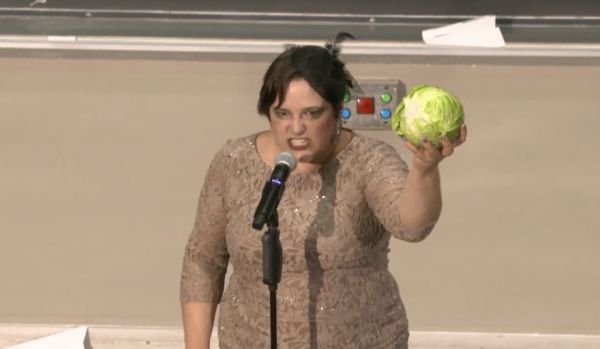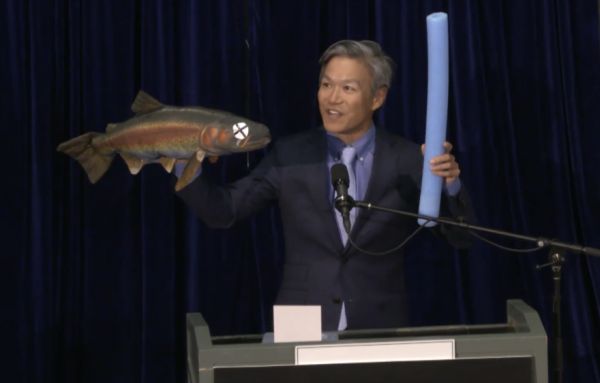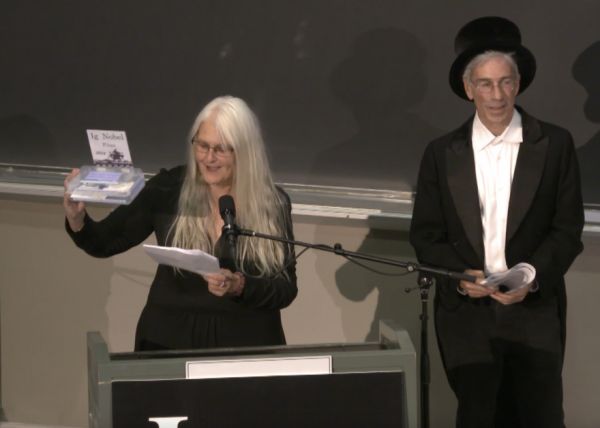Wall Street Journal Tax Report, A Tax-Shelter Crackdown Uncovers a Dentist’s ‘Smile High Trust’:
Ryan Ulibarri, a family dentist in Fort Collins, Colo., is in tax trouble that could take a big bite of his time and money [Department of Justice Press Release].
In late August, a Denver grand jury indicted him on six criminal counts for using an “abusive-trust tax shelter” to hide more than $3.5 million of taxable income he earned from 2017 to 2022. He allegedly underpaid more than $1 million of tax over that period.
Now Ulibarri could go to prison for tax evasion, and he could also owe the Internal Revenue Service unpaid taxes plus interest and penalties. Ulibarri, who earlier this month pleaded not guilty to the government’s charges, declined to comment through his lawyer, Joshua Lowther of Lowther Walker.
While most Americans aren’t in the market for tax shelters, the allegations in this case are a reminder of what can happen when taxpayers ignore professional advice and common sense on taxes. They also show how easy it can be for people who want to slash their taxes to delude themselves.
Ulibarri’s indictment is the latest in an IRS crackdown on shelters involving tax-reducing trusts that the agency considers “abusive,” its term for transactions that violate the law. In March, the agency posted an unusual warning about them on its website. The post gives details of typical schemes and says the agency has “detected a proliferation” of them aimed at wealthy individuals, business owners and professionals like doctors and lawyers.
Then in April, an indictment charged six people with conspiring to promote, sell or administer abusive trusts—including Ulibarri’s. In May, an Arizona tax preparer pleaded guilty to preparing and filing over 500 fraudulent returns for about 60 participants in abusive-trust shelters sold by the same promoters. The preparer admitted to helping conceal about $60 million of income, costing the Treasury about $17 million. ...
Ulibarri’s indictment aids the crackdown by tying the scheme to a real taxpayer. It allegedly shows, step by step, what one person did to reduce his tax bills almost to nothing on the advice of a tax-shelter promoter.
Editor's Note: If you would like to receive a daily email with links to tax posts on TaxProf Blog, email me here.
——
The 34th First Annual Ig Nobel Prize Ceremony was held last night at the Massachusetts Institute of Technology (MIT), returning to the real world after four years of being held virtually during the pandemic. Ten prizes were awarded for research that makes us laugh, and then make us think. The theme for this year's award was Murphy's Law, which simply says, "if anything can go wrong, it will go wrong." An operetta on Murphy's Law was performed (or was it Murphy slaw?). As if illustrating the contrariness of that law, the ceremony went off without a hitch, emceed as always by Marc Abrahams. The awards, bestowed by the magazine Annals of Improbable Research, have been held annually since 1991. Continue reading for a list of the winners.

PEACE
B.F. Skinner, for experiments to see the feasibility of housing live pigeons inside missiles to guide the flight paths of the missiles.
REFERENCE: "Pigeons in a Pelican", B.F. Skinner, American Psychologist, vol 15, no. 1, 1960, pp. 28-37.
BOTANY
Jacob White and Felipe Yamashita, for finding evidence that some real plants imitate the shapes of neighboring artificial plastic plants.
REFERENCE: "Boquila trifoliolata Mimics Leaves of an Artificial Plastic Host Plant," Jacob White and Felipe Yamashita, Plant Signaling and Behavior, vol. 17, no. 1, 2022.
ANATOMY
Marjolaine Willems, Quentin Hennocq, Sara Tunon de Lara, Nicolas Kogane, Vincent Fleury, Romy Rayssiguier, Juan José Cortés Santander, Roberto Requena, Julien Stirnemann, and Roman Hossein Khonsari, for studying whether the hair on the heads of most people in the northern hemisphere swirls in the same direction (clockwise or counter-clockwise?) as hair on the heads of most people in the southern hemisphere.
REFERENCE: "Genetic Determinism and Hemispheric Influence in Hair Whorl Formation," Marjolaine Willems, Quentin Hennocq, Sara Tunon de Lara, Nicolas Kogane, Vincent Fleury, Romy Rayssiguier, Juan José Cortés Santander, Roberto Requena, Julien Stirnemann, and Roman Hossein Khonsari, Journal of Stomatology, Oral and Maxillofacial Surgery, vol. 125, no. 2, April 2024, article 101664.
MEDICINE
Lieven A. Schenk, Tahmine Fadai, and Christian Büchel, for demonstrating that fake medicine that causes painful side-effects can be more effective than fake medicine that does not cause painful side-effects.
REFERENCE: "How Side Effects Can Improve Treatment Efficacy: A Randomized Trial," Lieven A. Schenk, Tahmine Fadai, and Christian Büchel, Brain, vol. 147, no. 8, August 2024, pp. 2643–2651.
PHYSICS
James C. Liao, for demonstrating and explaining the swimming abilities of a dead trout.
REFERENCE: "Neuromuscular Control of Trout Swimming in a Vortex Street: Implications for Energy Economy During the Kármán Gait," James C. Liao, The Journal of Experimental Biology, vol. 207, 2004, pp. 3495-3506.
REFERENCE: "Passive Propulsion in Vortex Wakes," David N. Beal, Franz S. Hover, Michael S. Triantafyllou, James C. Liao, and George V. Lauder, Journal of Fluid Mechanics, vol. 549, 2006, pp. 385-402.
REFERENCE: "Fish Swimming Efficiency," James C. Liao, Current Biology, vol. 32, June 20, 2022, pp. R666-R671.
PHYSIOLOGY
Ryo Okabe, Toyofumi F. Chen-Yoshikawa, Yosuke Yoneyama, Yuhei Yokoyama, Satona Tanaka, Akihiko Yoshizawa, Wendy L. Thompson, Gokul Kannan, Eiji Kobayashi, Hiroshi Date, and Takanori Takebe, for discovering that many mammals are capable of breathing through their anus.
REFERENCE: "Mammalian Enteral Ventilation Ameliorates Respiratory Failure," Ryo Okabe, Toyofumi F. Chen-Yoshikawa, Yosuke Yoneyama, Yuhei Yokoyama, Satona Tanaka, Akihiko Yoshizawa, Wendy L. Thompson, Gokul Kannan, Eiji Kobayashi, Hiroshi Date, and Takanori Takebe, Med, vol. 2, June 11, 2021, pp. 1-11.

PROBABILITY
František Bartoš, Eric-Jan Wagenmakers, Alexandra Sarafoglou, Henrik Godmann, and many colleagues, for showing, both in theory and by 350,757 experiments, that when you flip a coin, it tends to land on the same side as it started.
REFERENCE: "Fair Coins Tend to Land on the Same Side They Started: Evidence from 350,757 Flips," František Bartoš, et al., arXiv 2310.04153, 2023.
CHEMISTRY
Tess Heeremans, Antoine Deblais, Daniel Bonn, and Sander Woutersen, for using chromatography to separate drunk and sober worms.
REFERENCE: "Chromatographic Separation of Active Polymer–Like Worm Mixtures by Contour Length and Activity," Tess Heeremans, Antoine Deblais, Daniel Bonn, and Sander Woutersen, Science Advances, vol. 8, no. 23, 2022, article eabj7918.
DEMOGRAPHY
Saul Justin Newman, for detective work to discover that many of the people famous for having the longest lives lived in places that had lousy birth-and-death recordkeeping.
REFERENCE: "Supercentenarians and the Oldest-Old Are Concentrated into Regions with No Birth Certificates and Short Lifespans," Saul Justin Newman, BioRxiv, 704080, 2019.
REFERENCE: "Supercentenarian and Remarkable Age Records Exhibit Patterns Indicative of Clerical Errors and Pension Fraud," Saul Justin Newman, BioRxiv, 2024.
BIOLOGY
Fordyce Ely and William E. Petersen, for exploding a paper bag next to a cat that's standing on the back of a cow, to explore how and when cows spew their milk.
REFERENCE: "Factors Involved in the Ejection of Milk," Fordyce Ely and W.E. Petersen, Journal of Dairy Science, vol. 3, 1941, pp. 211-23.